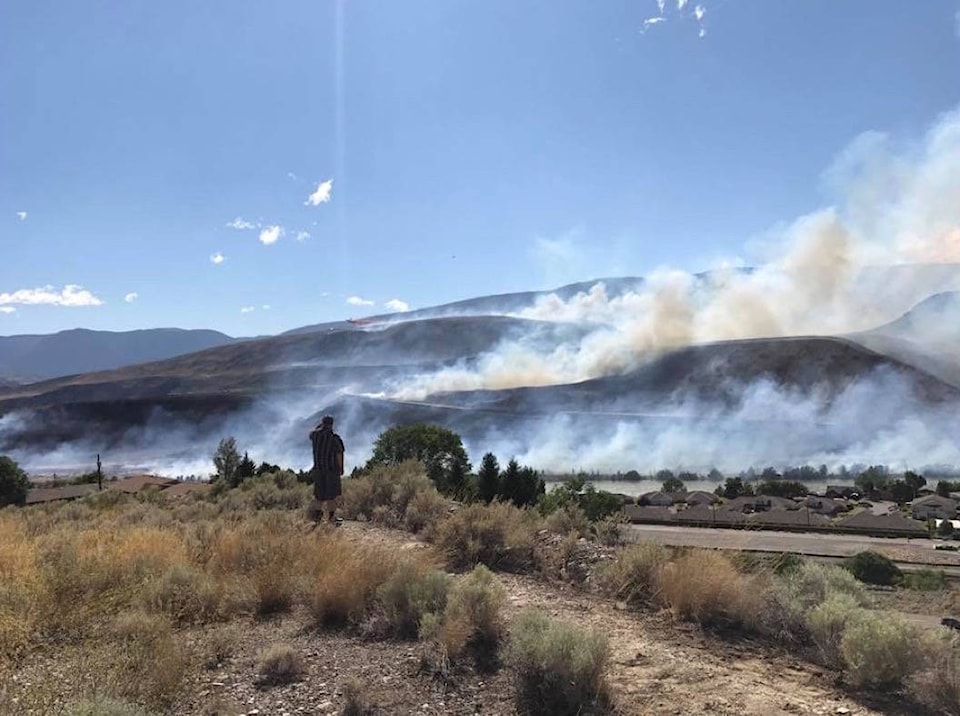“It was an unprecedented summer in terms of the area burned and the money spent on fire suppression,” says Kevin Skrepnek, chief fire information officer for the BC Wildfire Service. “We had fire activity across the whole province.”
The three most consequential fires were the Elephant Hill, Hanceville-Riske Creek, and Plateau wildfires. “They were all massive by any metric, and the largest single fire incidents in the province’s history. They’re ones for the record books. We’ll remember this fire season for all the wrong reasons.”
He says that going into the summer the deeper levels of the forest were very dry. “The rain came earlier than usual this year. June rains drive how the fire season can go.”
However, it was an unusually dry June, and that “set the table for what happened on July 7, which was super hot, windy, and dry. A lot of the fires that started were caused by dry lightning moving across the province.”
Skrepnek says that by the end of the day on July 7 he knew they were seeing something extraordinary. “There were so many fires, growing so quickly. We recognized by that weekend that this would be a summer-long event.
“And fires are so fickle. There’d be a stretch of a week where the fires weren’t that active, then they’d roar back to life. Weather was such a driving force. Wind and rain are almost impossible to forecast more than a few days out.”
Within days, Skrepnek had started a daily 1 p.m. briefing session that was accessible by phone for the media, who could ask questions of personnel from BC Wildfire Service, Emergency BC, the RCMP, the Armed Forces, the provincial government, and more.
“We started doing those briefings in 2015 a little bit, and then did them more this year. It was a good resource, because the Wildfire Service is just one factor. The calls were a one-stop shop, because you had all those people at the same table. We’d have 40 to 50 media outlets on each call, so it saved us a lot of time.
“They kept people in the loop. And they were a sense of comfort for the public, because they’d be hearing information right from the authorities. They were recorded and put in the Cloud, on social media, and online.” [Radio NL in Kamloops also carried the briefings live every day.]
Skrepnek says that if you look at fire starts per day, July 7 and 8 were outliers in terms of the number of fires that started, and that if it were not for the fires that started on those days it would likely have been a relatively normal fire season.
“We did have fires start later in the season, but the hugely significant fires in the Cariboo and the Ashcroft/Cache Creek area started on July 7 and 8.”
Skrepnek says that in our region, a lot of the grasses should grow back quite regularly. “Fire is part of the natural process. Where we have to wait and see are in areas where thicker stands of trees burnt. You can still see where the fires of 2003 burnt. We’ll likely see s scar; it depends on how intensely the fire burned.
“When an intense fire scars the land, the damage can be severe. Areas where the fire was less intense should grow back quite readily.”
Skrepnek says that the fires have had an impact on wildlife. “There were definitely a lot of habitats disturbed. I drove from 100 Mile House to Kamloops a month ago, and saw a lot of deer. Habitats are definitely changing.”
He adds that we can expect that the fire will be smouldering deeper underground in places for several months. “When the snow melts we could have parts of it pop up; smouldering pockets of smoke won’t be uncommon. We’re not terribly concerned about it.”
People are still working on the Elephant Hill wildfire, which has been 100 per cent contained since late September. “We’re doing rehabilitation of the landscape. Putting in fireguards can impact the land, so we’re going back in and trying to mitigate that. People will be out there for a long time, working on this.”
editorial@accjournal.ca
Like us on Facebook and follow us on Twitter
